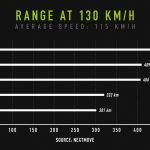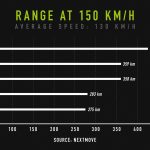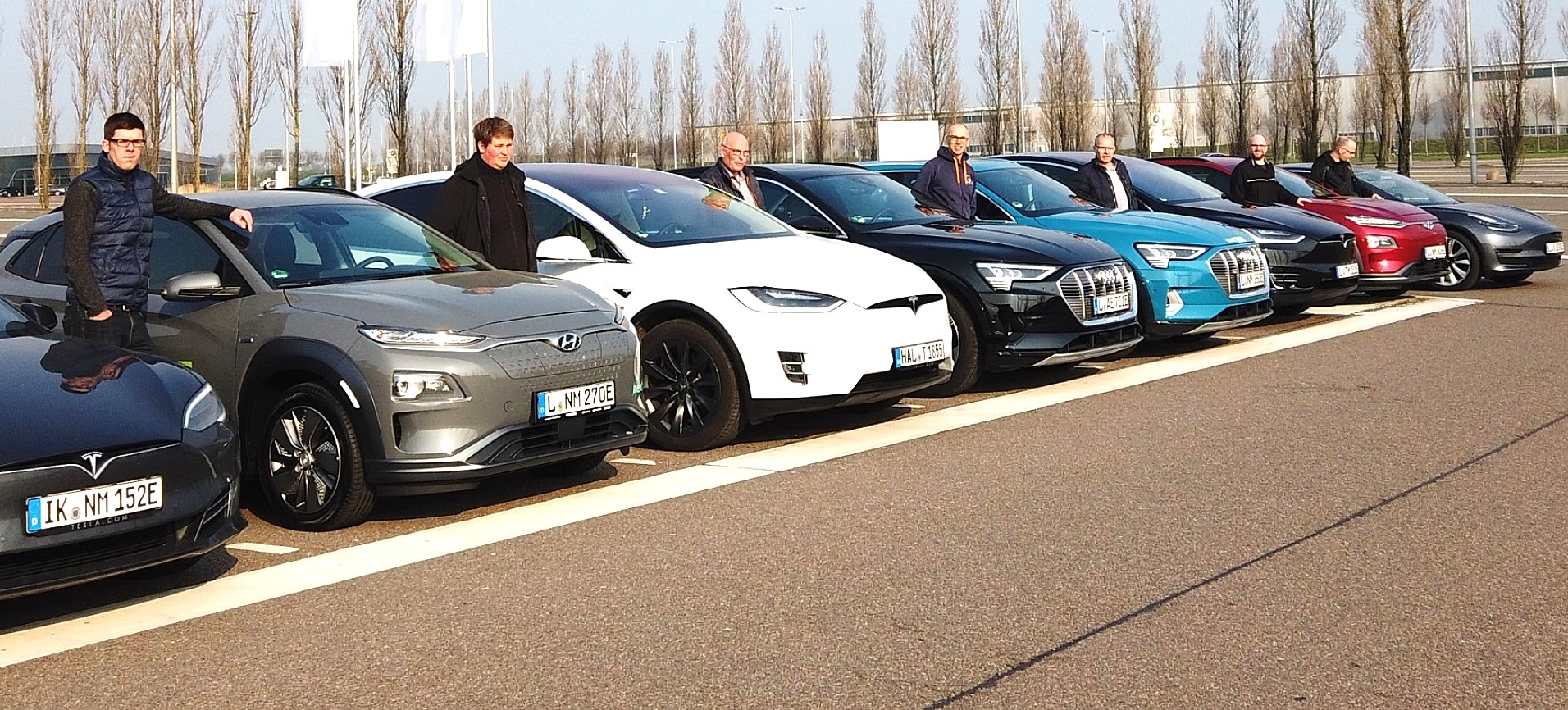
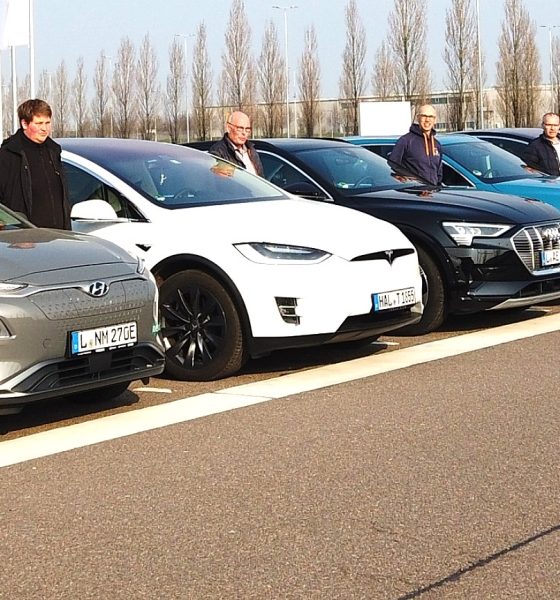
News
Tesla Model S, 3, X takes on Audi e-tron in Autobahn range and efficiency test
German electric vehicle rental company nextmove recently conducted what could only be described as the ultimate Autobahn efficiency and range test, pitting the Tesla Model S, 3, and X against the upstart Audi e-tron and the bang-for-your-buck Hyundai Kona Electric. Following the EV rental firm’s test, it was evident that veteran automakers such as Audi still have a long way to go before they catch up to Tesla’s experience in electric cars.
Eight vehicles were used for nextmove’s test: a Model S 100D (equipped with 19” winter tires), two Tesla Model X 100D (one fitted with 19” winter tires and the other fitted with 20” summer tires), one Tesla Model 3 Dual Motor AWD (equipped with 19” summer tires), two Audi e-tron (one with digital side mirrors and another with classic mirrors; both equipped with 21” summer tires), and two Hyundai Kona Electric (one fitted with 17” summer tires and the other fitted with 17” winter tires). Each vehicle’s tire pressure was set according to manufacturer specifications, and each was driven by an experienced electric car driver.

Several rules were observed to keep the Autobahn test as controlled as possible. Cruise control was only utilized once the target cruising speed of 130 kph (81 mph) and 150 kph (93 mph) was reached. Features such as Regenerative Braking were also avoided, and heating was largely disabled. Thet route was 85 km (52.8 miles) long, with the vehicles traveling 130 kph one way and 150 kph in the other.
The results of both the 130 kph (81 mph) and 150 kph (93 mph) tests revealed that the Tesla Model 3 was the most efficient vehicle among the eight that the EV rental company evaluated. Following the Model 3 was the Hyundai Kona Electric in summer tires, which is, in turn, followed by the Tesla Model S 100D. The largest vehicle in the group, the Tesla Model X, proved less efficient than the Model 3, Model S, and Kona Electric, but it proved notably more efficient than the Audi e-tron.
- (Photo: nextmove.de)
- (Photo: nextmove.de)
The Audi e-tron and the Tesla Model X had already gone head-to-head in a nextmove test in the past. During the previous test, the EV rental company utilized a pre-production version of the Audi e-tron, and it proved to be the electric equivalent of a gas-guzzler, being 23% less efficient than the larger, heavier Tesla Model X.
While the Audi e-tron performed much better against the Tesla Model X than its pre-production counterpart in the recent test, the all-electric SUV still proved less efficient than the Silicon Valley-made crossover. Quite interestingly, the difference in energy consumption between the Tesla Model X and Audi e-tron was more prominent at lower speeds than at higher speeds.

Tesla’s Model S, 3, and X cleared the house in terms of range. During the 130 kph test, the Model S 100D showed a range of 480 km (298 miles), the Model X 100D showed a range of 409 km (254 miles), and the Model 3 managed a range of 406 km (252 miles). The Hyundai Kona Electric turned in a respectable 322 km (200 miles), and the Audi e-tron, in last place, managed 301 km (187 miles).
The results of the 150 kph test were quite similar. The Model S, X and 3 proved superior once more with a range of 428 km (265 miles), 359 km (223 miles), and 358 km (222 miles). The Hyundai Kona Electric managed 283 km (176 miles), while the Audi e-tron achieved a range of 275 km (171 miles). With these results in mind, it appears that veteran automakers such as Audi still have their work cut out for them in terms of designing electric vehicles that offer a balance of power, efficiency, and range.
- (Photo: nextmove.de)
- (Photo: nextmove.de)
It should be noted that the Tesla Model X utilized by nextmove in its Autobahn efficiency test was a 100D unit, and thus, the vehicle was not yet equipped with the company’s updated high-efficiency drive units. With a “Raven” Model S and Model X in the equation, the German EV rental company’s test could very well have ended in a far more lopsided manner.
The full results of nextmove‘s eight-way comparative test could be accessed here.
Watch nextmove’s Autobahn efficiency test in the video below. English subtitles are available.

News
Tesla FSD v14.2.2 is getting rave reviews from drivers
So far, early testers have reported buttery-smooth drives with confident performance, even at night or on twisty roads.

Tesla Full Self-Driving (Supervised) v14.2.2 is receiving positive reviews from owners, with several drivers praising the build’s lack of hesitation during lane changes and its smoother decision-making, among others.
The update, which started rolling out on Monday, also adds features like dynamic arrival pin adjustment. So far, early testers have reported buttery-smooth drives with confident performance, even at night or on twisty roads.
Owners highlight major improvements
Longtime Tesla owner and FSD user @BLKMDL3 shared a detailed 10-hour impression of FSD v14.2.2, noting that the system exhibited “zero lane change hesitation” and “extremely refined” lane choices. He praised Mad Max mode’s performance, stellar parking in locations including ticket dispensers, and impressive canyon runs even in dark conditions.
Fellow FSD user Dan Burkland reported an hour of FSD v14.2.2’s nighttime driving with “zero hesitations” and “buttery smooth” confidence reminiscent of Robotaxi rides in areas such as Austin, Texas. Veteran FSD user Whole Mars Catalog also demonstrated voice navigation via Grok, while Tesla owner Devin Olsen completed a nearly two-hour drive with FSD v14.2.2 in heavy traffic and rain with strong performance.
Closer to unsupervised
FSD has been receiving rave reviews, even from Tesla’s competitors. Xpeng CEO He Xiaopeng, for one, offered fresh praise for FSD v14.2 after visiting Silicon Valley. Following extended test drives of Tesla vehicles running the latest FSD software, He stated that the system has made major strides, reinforcing his view that Tesla’s approach to autonomy is indeed the proper path towards autonomy.
According to He, Tesla’s FSD has evolved from a smooth Level 2 advanced driver assistance system into what he described as a “near-Level 4” experience in terms of capabilities. While acknowledging that areas of improvement are still present, the Xpeng CEO stated that FSD’s current iteration significantly surpasses last year’s capabilities. He also reiterated his belief that Tesla’s strategy of using the same autonomous software and hardware architecture across private vehicles and robotaxis is the right long-term approach, as it would allow users to bypass intermediate autonomy stages and move closer to Level 4 functionality.
News
Elon Musk’s Grok AI to be used in U.S. War Department’s bespoke AI platform
The partnership aims to provide advanced capabilities to 3 million military and civilian personnel.
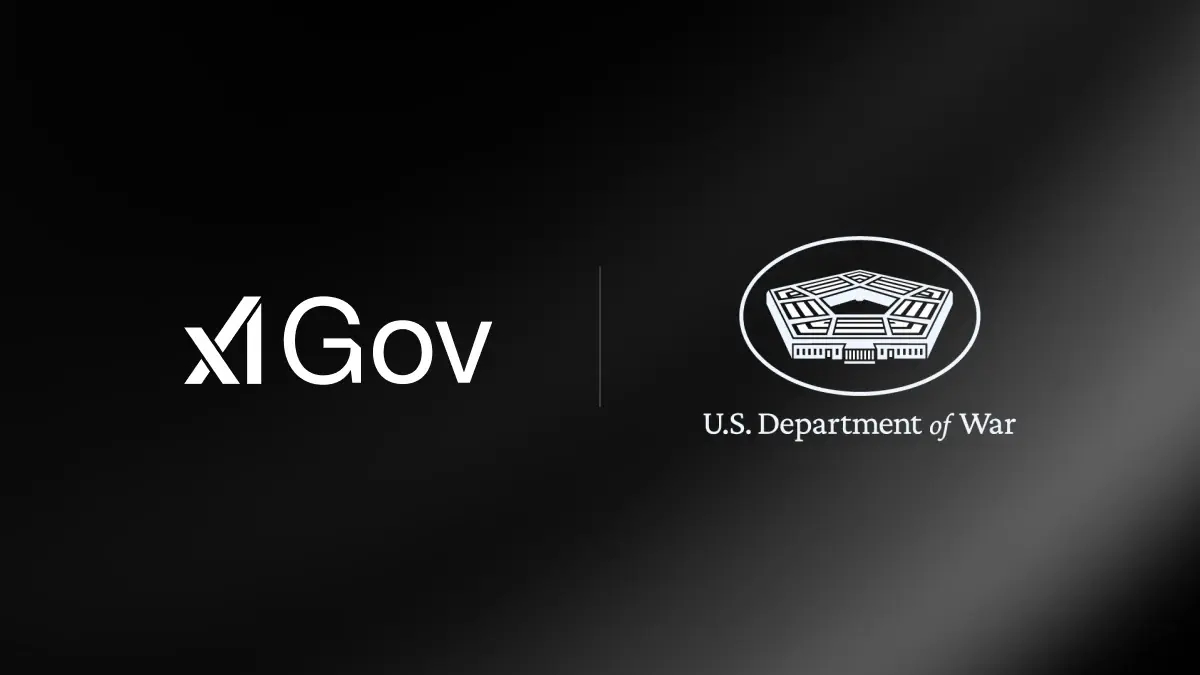
The U.S. Department of War announced Monday an agreement with Elon Musk’s xAI to embed the company’s frontier artificial intelligence systems, powered by the Grok family of models, into the department’s bespoke AI platform GenAI.mil.
The partnership aims to provide advanced capabilities to 3 million military and civilian personnel, with initial deployment targeted for early 2026 at Impact Level 5 (IL5) for secure handling of Controlled Unclassified Information.
xAI Integration
As noted by the War Department’s press release, GenAI.mil, its bespoke AI platform, will gain xAI for the Government’s suite of tools, which enable real-time global insights from the X platform for “decisive information advantage.” The rollout builds on xAI’s July launch of products for U.S. government customers, including federal, state, local, and national security use cases.
“Targeted for initial deployment in early 2026, this integration will allow all military and civilian personnel to use xAI’s capabilities at Impact Level 5 (IL5), enabling the secure handling of Controlled Unclassified Information (CUI) in daily workflows. Users will also gain access to real‑time global insights from the X platform, providing War Department personnel with a decisive information advantage,” the Department of War wrote in a press release.
Strategic advantages
The deal marks another step in the Department of War’s efforts to use cutting-edge AI in its operations. xAI, for its part, highlighted that its tools can support administrative tasks at the federal, state and local levels, as well as “critical mission use cases” at the front line of military operations.
“The War Department will continue scaling an AI ecosystem built for speed, security, and decision superiority. Newly IL5-certified capabilities will empower every aspect of the Department’s workforce, turning AI into a daily operational asset. This announcement marks another milestone in America’s AI revolution, and the War Department is driving that momentum forward,” the War Department noted.
News
Tesla FSD (Supervised) v14.2.2 starts rolling out
The update focuses on smoother real-world performance, better obstacle awareness, and precise end-of-trip routing, among other improvements.

Tesla has started rolling out Full Self-Driving (Supervised) v14.2.2, bringing further refinements to its most advanced driver-assist system. The new FSD update focuses on smoother real-world performance, better obstacle awareness, and precise end-of-trip routing, among other improvements.
Key FSD v14.2.2 improvements
As noted by Not a Tesla App, FSD v14.2.2 upgrades the vision encoder neural network with higher resolution features, enhancing detection of emergency vehicles, road obstacles, and human gestures. New Arrival Options let users select preferred drop-off styles, such as Parking Lot, Street, Driveway, Parking Garage, or Curbside, with the navigation pin automatically adjusting to the user’s ideal spot for precision.
Other additions include pulling over for emergency vehicles, real-time vision-based detours for blocked roads, improved gate and debris handling, and extreme Speed Profiles for customized driving styles. Reliability gains cover fault recovery, residue alerts on the windshield, and automatic narrow-field camera washing for new 2026 Model Y units.
FSD v14.2.2 also boosts unprotected turns, lane changes, cut-ins, and school bus scenarios, among other things. Tesla also noted that users’ FSD statistics will be saved under Controls > Autopilot, which should help drivers easily view how much they are using FSD in their daily drives.
Key FSD v14.2.2 release notes
Full Self-Driving (Supervised) v14.2.2 includes:
- Upgraded the neural network vision encoder, leveraging higher resolution features to further improve scenarios like handling emergency vehicles, obstacles on the road, and human gestures.
- Added Arrival Options for you to select where FSD should park: in a Parking Lot, on the Street, in a Driveway, in a Parking Garage, or at the Curbside.
- Added handling to pull over or yield for emergency vehicles (e.g. police cars, fire trucks, ambulances).
- Added navigation and routing into the vision-based neural network for real-time handling of blocked roads and detours.
- Added additional Speed Profile to further customize driving style preference.
- Improved handling for static and dynamic gates.
- Improved offsetting for road debris (e.g. tires, tree branches, boxes).
- Improve handling of several scenarios, including unprotected turns, lane changes, vehicle cut-ins, and school buses.
- Improved FSD’s ability to manage system faults and recover smoothly from degraded operation for enhanced reliability.
- Added alerting for residue build-up on interior windshield that may impact front camera visibility. If affected, visit Service for cleaning!
- Added automatic narrow field washing to provide rapid and efficient front camera self-cleaning, and optimize aerodynamics wash at higher vehicle speed.
- Camera visibility can lead to increased attention monitoring sensitivity.
Upcoming Improvements:
- Overall smoothness and sentience.
- Parking spot selection and parking quality.


